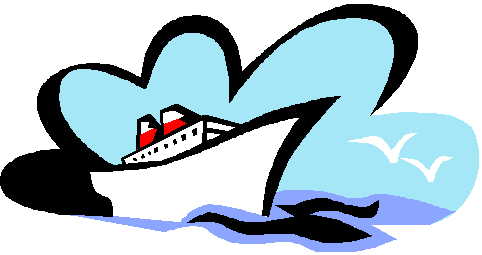|
Journal
Contact Us
Poems
Site Map
Search
| |
This was really our first double-handed
off-shore trip out of the sight of land - and was a real shake-down cruise for
our skills and psyches.
We left the safety
of Beaufort behind and faced a 10-day trip to Jost Van Dyke in the Virgin
Islands - knowing we could only predict the weather for the next 3 days.
The details of the trip are fading, but words from the log bring
them back:
10 Nov
1700 Entered Gulf Stream - lumpy
11 Nov
0200 May be out of Gulf Stream
.
13 Nov
0036 Winds SSE 30-35, Heeled over,
lots of seas
0835 Winds 20-25, standing watch
inside, too wet
.
14 Nov
1324 Winds 5-10, light winds, motoring
.
15 Nov
0200 Front moving by, bird riding with
us
.
18 Nov
1800 24�42'N 66�21'W; changing to
W/P "Jost"
19 Nov
2230 Struck by lightning (see
details)
.
21 Nov
0125 Winds 15-20, a little bouncy
22 Nov
1900 Anchor down in Charlotte Amalie,
USVI
One incident stands out in our minds - as we took a  break
from our routine to have a spot of lunch below, Judi looked out a porthole - and
saw the profile of a ship REAL CLOSE! We popped up, and noted that it had
diverted to go around us, as it should. Still, we let it get too close
without seeing it, so we sheepishly got on the VHF and asked him how we looked
on his radar and apologized for not contacting him. He assured us he
always kept a good watch, and by the way his radar was off. break
from our routine to have a spot of lunch below, Judi looked out a porthole - and
saw the profile of a ship REAL CLOSE! We popped up, and noted that it had
diverted to go around us, as it should. Still, we let it get too close
without seeing it, so we sheepishly got on the VHF and asked him how we looked
on his radar and apologized for not contacting him. He assured us he
always kept a good watch, and by the way his radar was off.
We have more to say about this elsewhere, but a
couple of things made an impression on our maiden voyage:
- Herb on Southbound II - We discovered, along with hundreds of other
cruisers, the wonderful help provided by this man, then based in Bermuda and
now in Canada, as he collected weather information from many sources and
provided it to those of us who were at the mercy of the weather systems - it
was a great comfort talking with him each day.
- NMN - The US Government's weather reports by 'Mechanical Mike' were
also very helpful for this part of the ocean.
- Weather Systems - We learned how weather systems move differently
at different latitudes:
- At the NY/MD latitudes systems move briskly from West to East.
- At the Florida latitudes they move much more slowly, and sometimes
stop for a while.
- In the tropics they move slowly from East to West (hurricanes come from
Africa to the Caribbean.
None of this was new news, but we did not appreciate it until we were
affected by weather systems that moved in ways we did not understand at the
time.
The lightning strike knocked out all of our instruments, so we diverted
to St. Thomas as a better place to obtain parts and repairs. (smart move - when
we
reached finally Jost Van Dyke we found just a beach bar and anchorage.) It took us
12 hours to rest and mentally prepare ourselves to continue the trip. The
next 2 days were reasonably uneventful, except for the 2 final incidents as we
approached St Thomas:
- Knock Down (almost) - As we entered the pass between St Thomas and
Culebra, a 6-8' swell from the NE exposed our port side to beam seas, but we
seemed to be riding them OK motor-sailing in moderate conditions.
Unfortunately the shoaling seabed made some of them break, and one caught
us, breaking on our port beam and knocking us over to 60-70� - dislodging a
radio and other loose items below. After our arrival in St Thomas we talked
with the crew of a Hinckley 50 that lost its life-raft, kayak and dinghy in the same
area that day.
- Night Entrance - We had been trained not to enter strange ports at
night, but with the guidance of a charter skipper on the radio we chanced
Charlotte Amalie - see Virgin Islands for the
gory details.
|